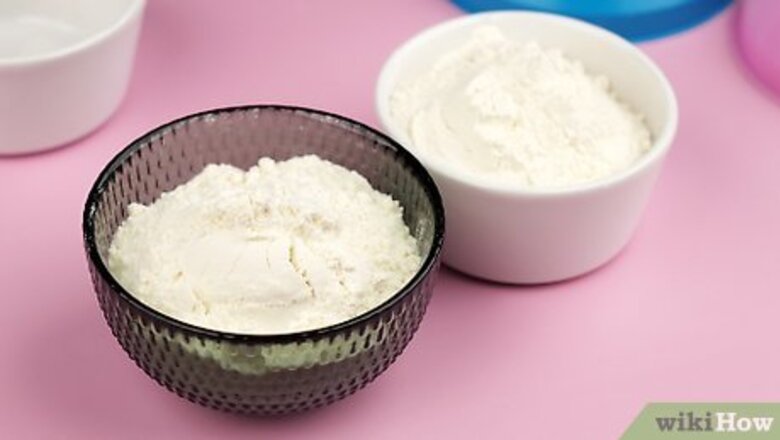
views
- Choose flour, dried beans, birdseed, modeling clay, or play dough for your stress ball filling.
- Insert a funnel into the neck of a regular party balloon and pour in your filling.
- Tie the balloon closed, then cut off the excess.
- Cut the neck off of another balloon and stretch it over your stress ball so it lasts longer.
Choosing a Filling
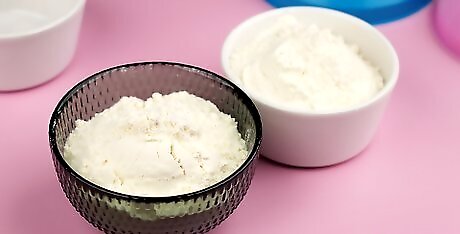
Use flour for a soft and malleable ball. Pour all-purpose flour for baking into your balloon for your stress ball. This creates a ball that is soft and squishy and will more or less hold the shape you form it into. You can also use other common powdered baking ingredients that you have on hand, like cornstarch or baking soda. Or use sand, if you have it available, for a slightly grainier texture. Note that this filling can be messier if spills occur, but it is popular for its low expense and the satisfying texture it creates for a stress ball.
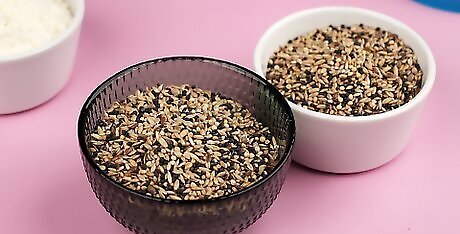
Use dried beans or birdseed for a firmer ball. Try small dry beans, lentils, rice, or birdseed to fill your balloon for the stress ball. This creates a firmer, more textured ball, like a bean bag. This type of filling doesn’t create as squishy of a ball, but it can be easier to get into the balloon and creates less of a mess if spilled. Note that birdseed or dry goods may have sharp or cracked fragments that could create a hole in the balloon for your stress ball. Prevent this by using several layers of balloons to make a thicker surface for your stress ball, or opting for a smoother filling material instead. You can also mix dry beans with flour for a filling that is a mixture of firm and soft. Try half beans and half flour, or whatever combination creates a texture you like.
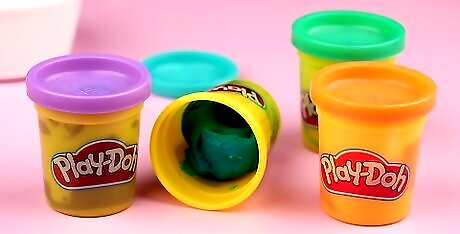
Try modeling clay or playdough. Use a modeling clay product or playdough to put into your balloon. This creates a stress ball that is very squishy and holds its shape well. Be aware that many modeling clays and play doughs will dry up over time when left exposed to the air. Though you will be putting it inside a tied balloon, it may not be completely airtight and your stress ball could harden after a couple days or weeks. Note that solids like modeling clay or playdough can be more difficult to get into a balloon successfully. Use a funnel as with any other filling, and roll the clay or dough into thin snakes to help get it through and into the balloon.
Filling the Balloon

Observe safety precautions while filling balloons. Use caution when performing the pouring and cutting required in filling party balloons. Adults should supervise or perform parts of this process for children. Use scissors carefully when cutting balloons. You can also avoid spills of the filling by laying down newspaper or another covering over your work area. Take care if you have a latex allergy, in which case you should opt for balloons made of Mylar or another material instead of the common latex. Adults should handle balloons for infants and toddlers, as balloons and balloon pieces are a choking hazard.
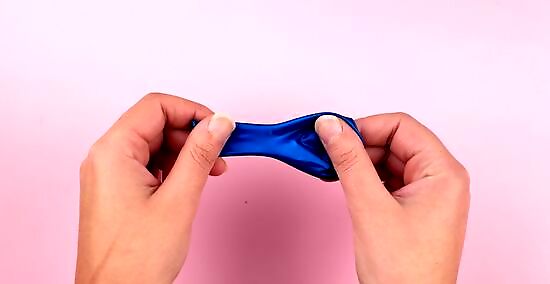
Stretch out a standard party balloon. Use your fingers to gently stretch out a latex balloon in all directions. This will make the material of the balloon more flexible for filling. You can also blow up the balloon slightly with your mouth to stretch the material. Make sure to stretch out the neck of the balloon, which will be crucial in getting your filling to pour through it easily.
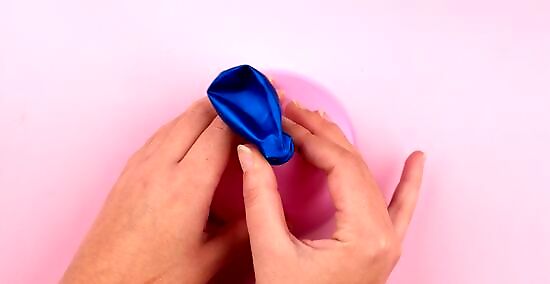
Insert a funnel into the neck of the balloon. Put a funnel into the neck of the balloon to pour filling in easier. You may be able to roll the neck of the balloon over the tip of the funnel so it holds itself there securely. If you don’t have a plastic or metal funnel on hand, simply roll a piece of paper into a cone shape. Make sure the small end is narrow enough to fit into the neck of your balloon but wide enough to let your filling material through. Tape your paper funnel together so it doesn’t unroll while filling. You can also make your own funnel by cutting the top half of a water bottle off and using the mouth of the bottle to put into the balloon.
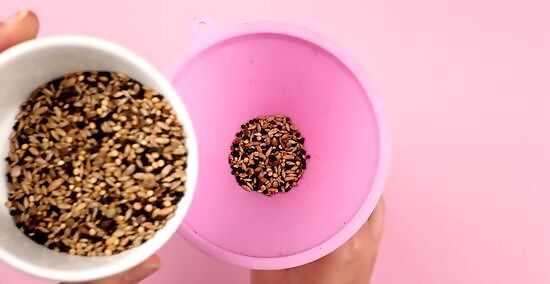
Pour in the filling. Use about ¼ cup of your preferred filling material to pour into the balloon. Hold your funnel steady and pour carefully to avoid spills. If the filling gets trapped in the funnel during pouring, gently shake the balloon to settle the contents, or help push the filling through with a pencil. Fill the round portion of the balloon with filling, no further than the base of the neck. A fuller balloon will create a firmer stress ball, while a less full balloon will create a softer, squishier one. Tie off the neck of the balloon tightly by making a knot in the rubber. You can double knot it for extra security.
Finishing the Stress Ball
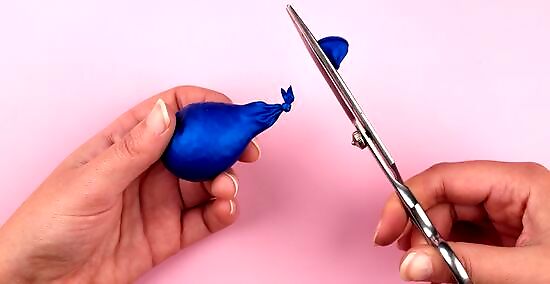
Cut off the excess balloon. Carefully cut off the excess neck of the balloon above the knot you made to close it. This will make for a smoother ball when you add another balloon. Be carefully when cutting the excess that you don’t cut into the knot itself, or any other part of the balloon. For a perfectly round and smooth ball, you can actually hold the balloon very carefully and cut the neck off completely so there is no knot. Then you must cover the hole immediately with another balloon to seal it.
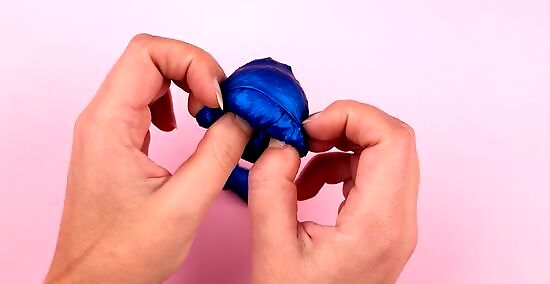
Wrap with a second balloon. Cut the neck off of another balloon, then stretch the opening wide and fit it around your filled and tied balloon. This keeps it secure and less likely to break or spill. Cut more from the top of your balloon to create a wider hole if you have trouble fitting it over your ball. Note that the hole will be obvious if you use two different colors for the first and second balloon. Put your cut balloon over the knot of the first balloon to cover it and keep the surface of your ball more smooth. You can put as many layers of additional balloons on your ball as you want for extra security. Note that your ball will become firmer and less squishy the more balloon layers you put on.
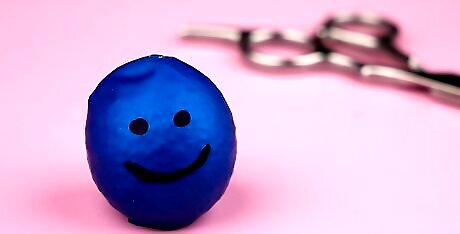
Decorate the outer balloon if desired. Adorn your stress ball with images, words, or other decorations that will make you happy and contribute to reducing stress. You can use pens, markers, or anything else that will stick to the surface of the balloon. Try cutting shapes into the top balloon layer before you pull it over the ball. If you use a different color as the balloon underneath, this creates an interesting contrasting pattern. Try drawing a happy face on your stress ball, or some inspiring words that will help you relax or de-stress.


















Comments
0 comment